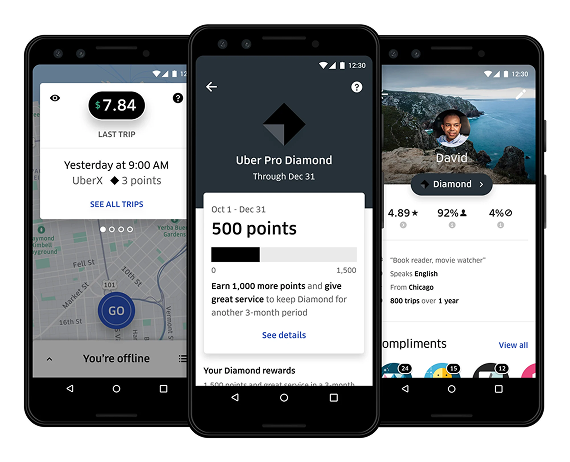Test blog post
Gamification: workforce training savior or gimmick with no lasting impact? In this blog, we dig into the debate on whether it's an essential - or not.
TABLE OF CONTENTS
You probably come across gamification in some form every day.
Think about it: have you ever collected stamps at a coffee shop? Accumulated airline points? Completed a survey to be entered into a prize draw?
While the term gained popularity in the early 2000s, the concept of gamification has been around since the start of the 20th century, when, for example, Boy Scouts could earn badges and ranks based on the activities they undertook.
More recently, gamification has been picked up by employers to help incentivize employees. Uber uses driver gamification to increase retention. Dominos uses it to drive recruitment. Construction giant Norconsult uses it to streamline its processes.
With more and more content out there on the benefits of gamification - take gamification expert Yu-kai Chou’s list of 90+ gamification ROI statistics, for example - it’s a no-brainer to have gamification features on your checklist before making a new software investment.
…or, is it?
What benefit does gamification provide from a learning science perspective? Will it really make an impact on your workforce?
As Chou himself asks in his book, Actionable Gamification: Beyond Points, Badges and Leaderboards, ‘Does it actually create value and return measurable results, or is it just a new gimmicky fad without lasting impact?’
In this blog post, we’re going to find out just how effective gamification is for businesses looking to train their workforces.
2025 Report: The State of Frontline Training
Hear what 1,200+ leaders AND workers have to say about frontline training, tech and trends.
%20(1).png?width=2000&height=1500&name=WD%20Pocket%20Guide%20Mockup%201%20(transparent)%20(1).png)
The Challenge
First things first, a quick definition. Gamification is the use of game-like features in a non-game context, with the aim of increasing motivation and engagement.
In a learning context, this could look like points, badges, leaderboard status, and rewards awarded for completing certain behaviors like completing lessons, consistency, achieving high quiz scores, or certain milestones.
Let’s take a look at an example.
An example of gamification
Have you heard of Uber Pro? If not, it’s one of the platform economy’s most famous loyalty programs, introduced by - you guessed it - Uber to retain its workforce.



Uber employs driver gamification by allowing its workers to earn points with every trip. The more points a driver gains, the more rewards they unlock. Drivers are also assigned a level based on the number of points they have: they start at blue, before moving to gold once they’ve hit 600 points, platinum once they hit 1,200 points, and diamond once they hit 1,800 points.
By motivating drivers to make more trips, Uber aims to achieve worker loyalty - a scarce commodity in the platform economy, with some businesses reporting a churn rate of 500% a year.
Advantages of gamification in learning
Let’s dig a little deeper. Why is gamification beneficial when it comes to training a workforce?
Well, playing games increases the levels of dopamine - the chemical that makes us feel good - in our brains. The more dopamine we experience, the more likely we are to return to the activity that triggered the dopamine release - particularly useful for an initiative that requires regular, sustained interaction like training.
By encouraging the learner to interact with the content, retention rates and completion rates increase - the benefits of which include improved workforce performance, engaged and happier employees, and a safer working environment.
Disadvantages of gamification in learning
The benefits of gamification are appealing, but that doesn’t mean every business should rush to implement it wherever possible. Bad gamification - when the design of the initiative is ill-thought-out or poorly executed - can destroy the learning experience just as much as good gamification can aid it.
For example, if you lean too heavily on gamification, it becomes more about the game or points scoring than the learning. With any game, there’s a risk of getting bored - and gaining a negative association with the content as a result.
Scott Nicholson, Associate Professor at Syracuse University School of Information Studies and Director at Because Play Matters, also notes that gamification must be carefully implemented. In his paper A Recipe for Meaningful Gamification he warns against the over-usage of rewards.
“Reward systems do work as long as the rewards keep coming. When the rewards stop, however, the behavior will likely stop also unless the subject has found some other reason to continue the behavior.”
Scott Nicholson
So, why does gamification make such an impact either way? The answer lies in the concepts of intrinsic and extrinsic motivation.
The mechanics of gamification
If a worker is extrinsically motivated to engage in a task, they’re doing so because they hope to gain a reward (like points or a financial prize) or because they want to avoid a punishment (like losing points or dropping down a level). The motivation is entirely dependent on external sources.
Intrinsic motivation is the opposite. If a worker is intrinsically motivated to do something, they are because it fulfills them: maybe they find it enjoyable, or maybe the outcome of the task is attractive to them.
Scott Nicholson notes that ‘performing tasks for intrinsic reasons puts someone in a more healthy mental state than performing tasks for extrinsic rewards’. In other words, to maximize the long-term effectiveness of gamification when it comes to training, you need to generate intrinsic rather than extrinsic motivation.
QUICK NOTE
We’re not saying here that rewards aren’t valuable at all. In fact, they can be incredibly useful in motivating initial uptake or achieving short-term goals. Long term, however, you want to shift the focus away from rewards and make sure workers are motivated to complete their training regardless of whether they receive them or not.
Next up, let’s take a look at what a meaningful gamification initiative looks like.
What meaningful gamification looks like
Take a step back for a minute. The first thing we want to do when designing a meaningful gamification experience is to connect it to a business's own motivations.
Gamification and problem-solving
The best examples of gamification come from the need to solve a problem. If a problem is clear, so are the behaviors to track and reward.
For example:
- If workers aren't opening training, you want to track and reward engagement
- If workers aren't completing their lessons or courses, you want to track and reward engagement
- If workers aren't getting high enough quiz scores, you want to track and reward engagement and application
- If workers are unable to perform certain tasks, you want to track and reward knowledge application
Gamification and behavior-tracking
Let’s take a closer look at these behaviors: why you might want to track and reward them and how to do it.
1. Completion of learning modules
Rewarding completion significantly increases motivation, which makes sure learners are progressing through the material.
How: Award points, badges or certificates for completing modules or courses.
2. Completion of learning modules
Gamified learning environments that foster active participation - when learners have to engage with the lesson, rather than absorbing passively - have been shown to improve knowledge retention and engagement.
How: Reward participation in discussions, forums, and collaborative projects with points or badges.
3. Consistency and regularity
You want to build learning habits and keep engagement consistent, as regular interaction with learning material is linked to better retention and understanding.
How: Offer rewards for logging in regularly, such as streaks or daily bonuses.
Is gamification really that great? Final thoughts
Treat gamification as a tick-box exercise, and you’ll have spent a lot of money on features with no lasting impact - or, even worse, on features that have a negative impact on your employee’s learning experience.
If introduced well, and, crucially, only when you actually need it, gamification can be an effective way of engaging your workforce with your training program.
Our final take? Treat gamification carefully, and you’ll reap the rewards.
Join 10,000+ frontline leaders
Subscribe to ‘Training the Frontline’ and get weekly insights sent straight to your inbox.

